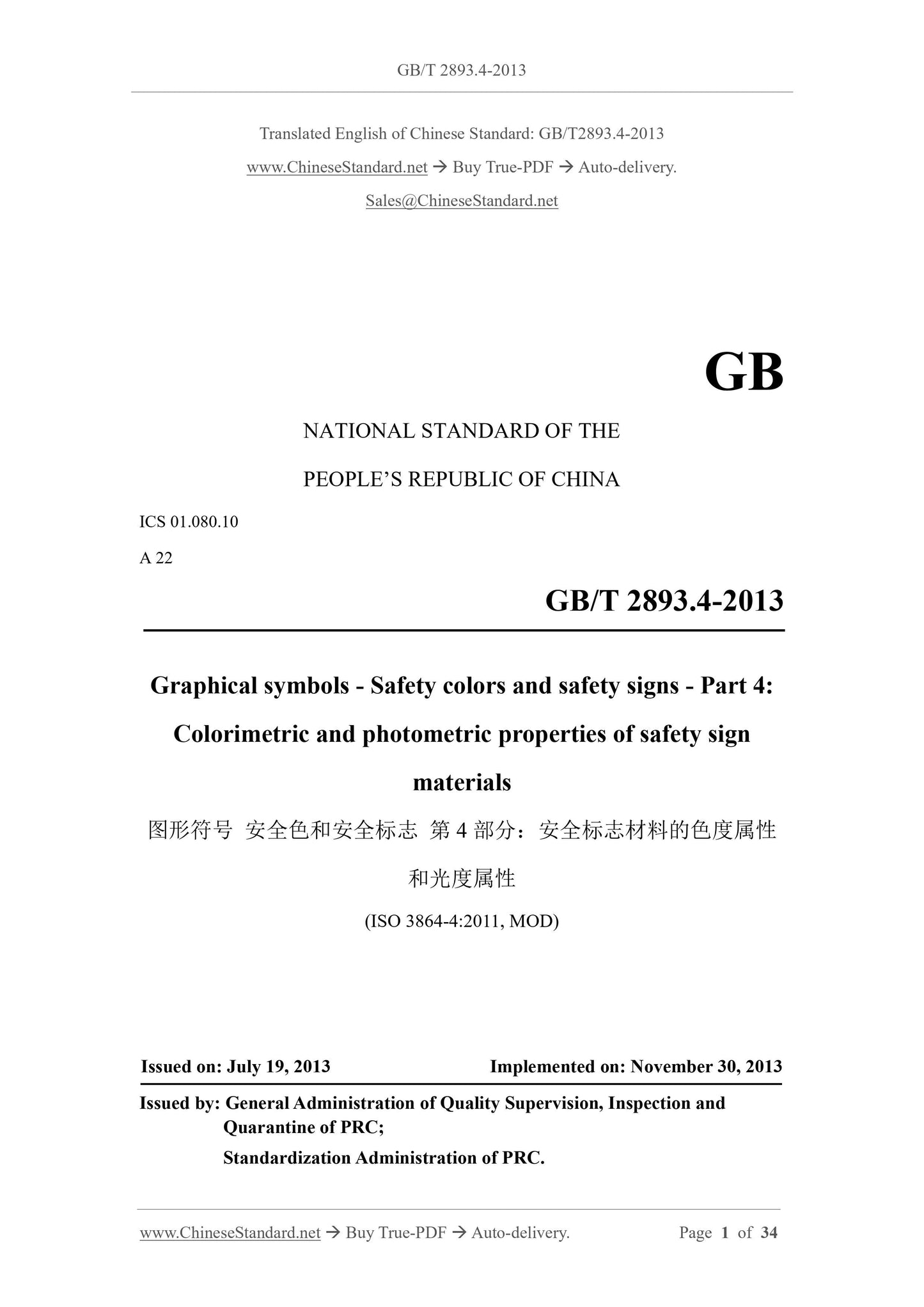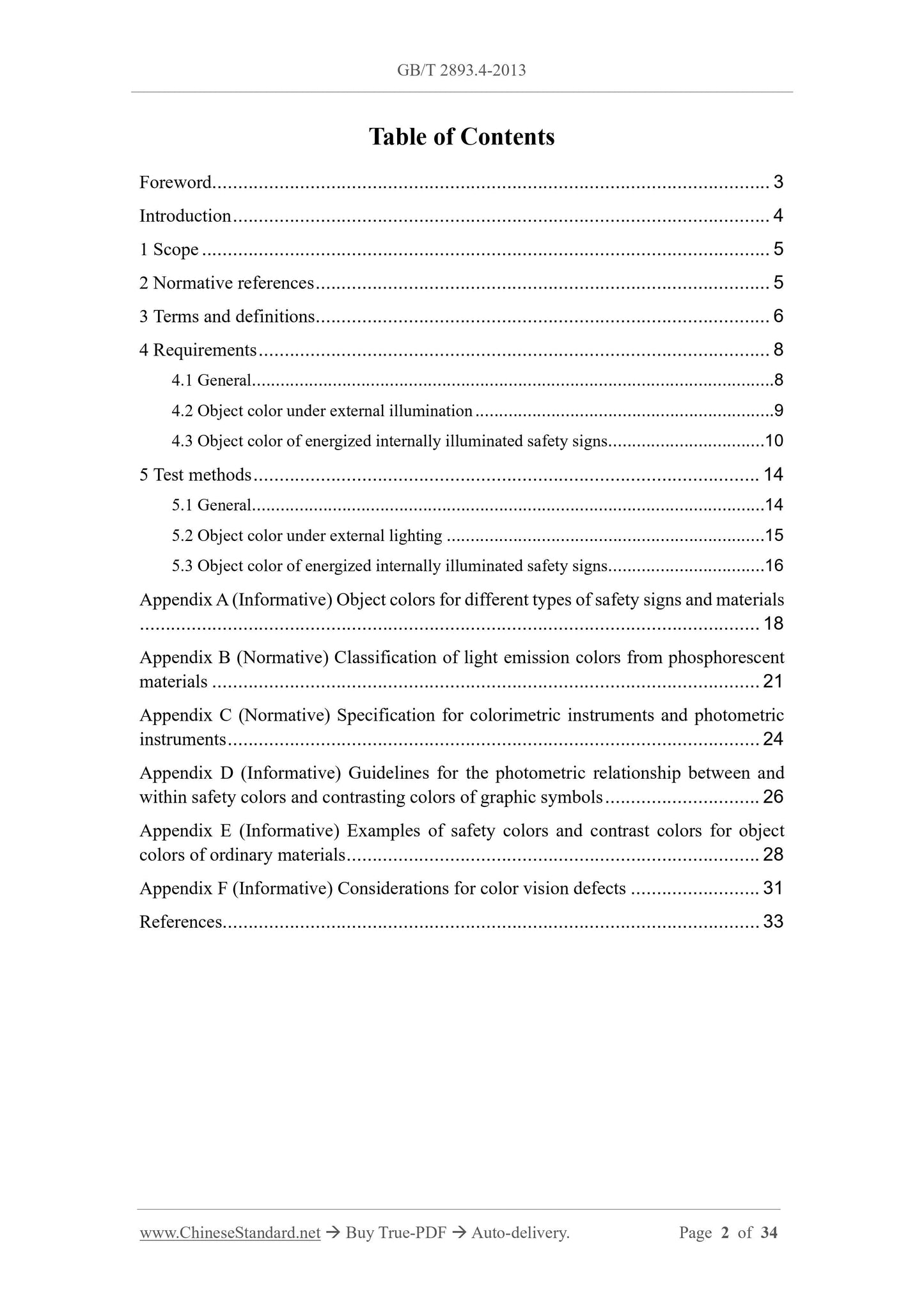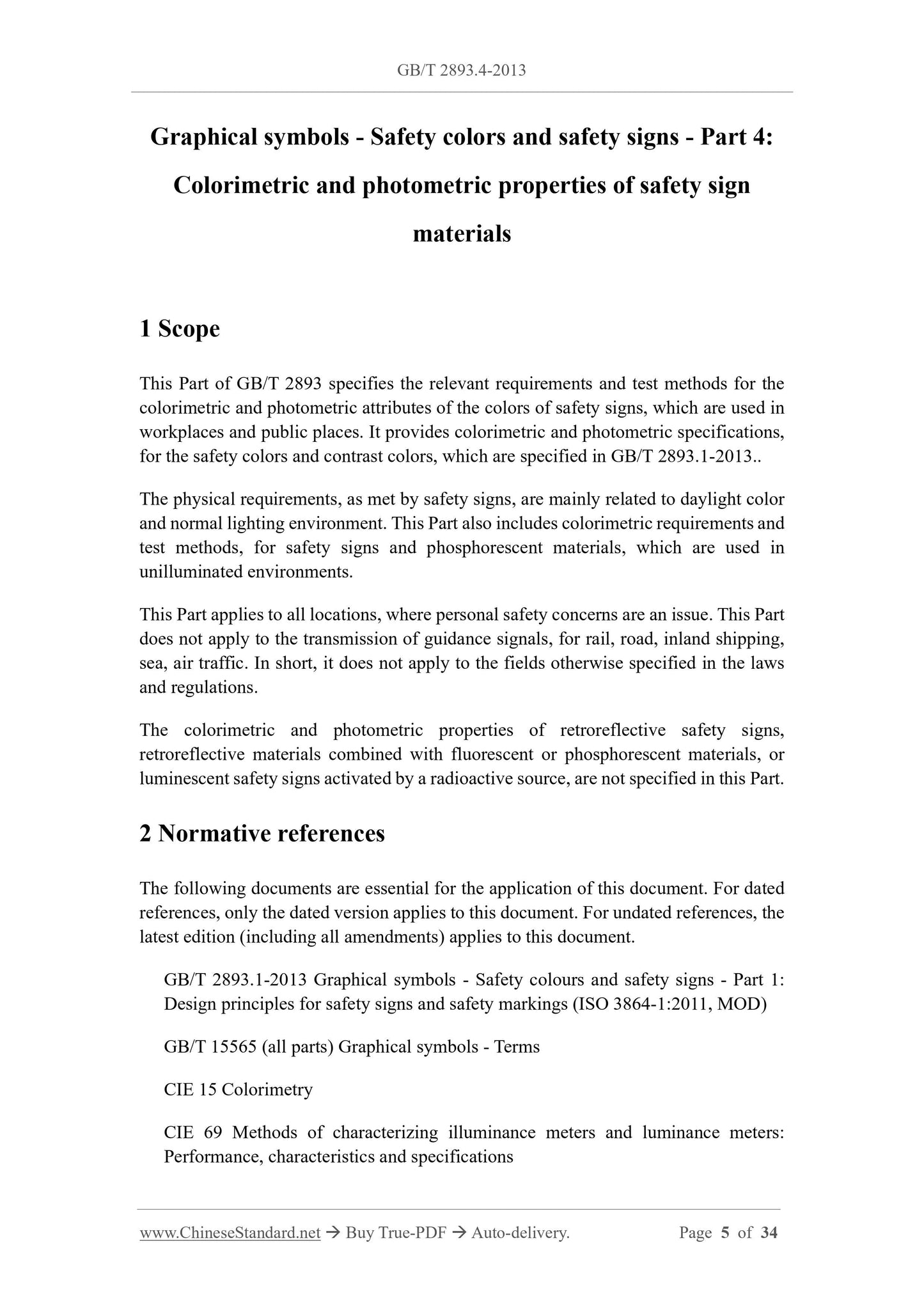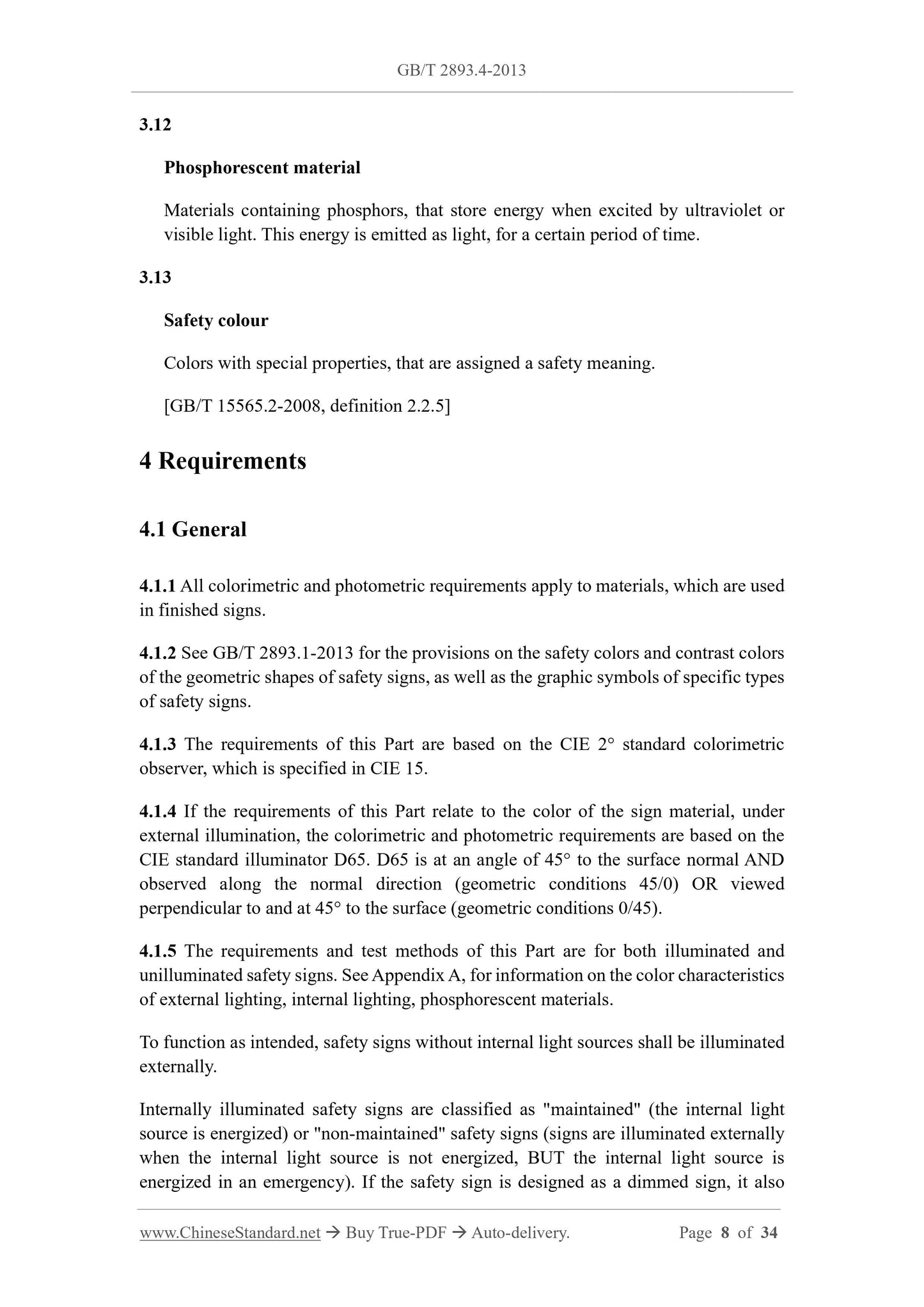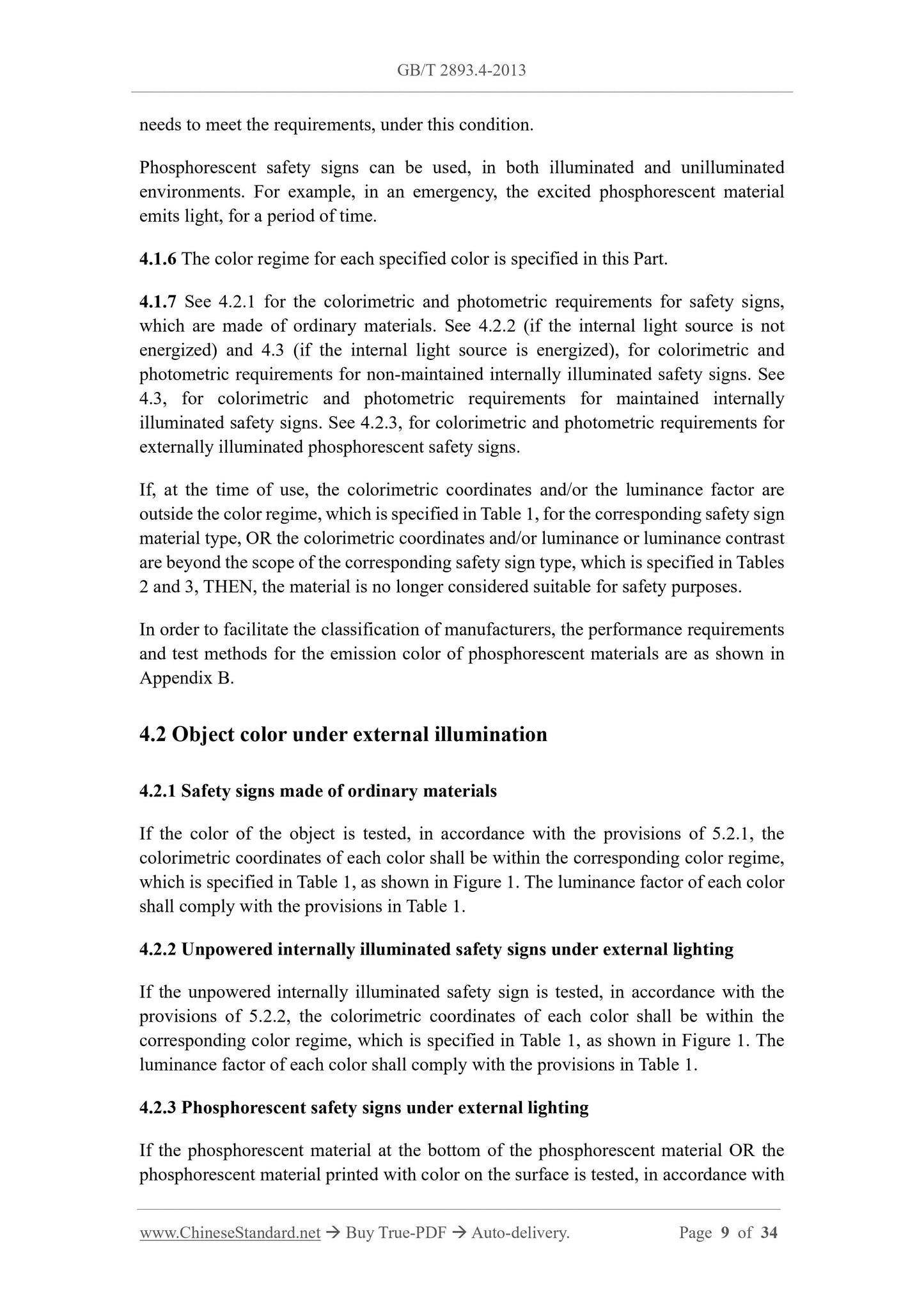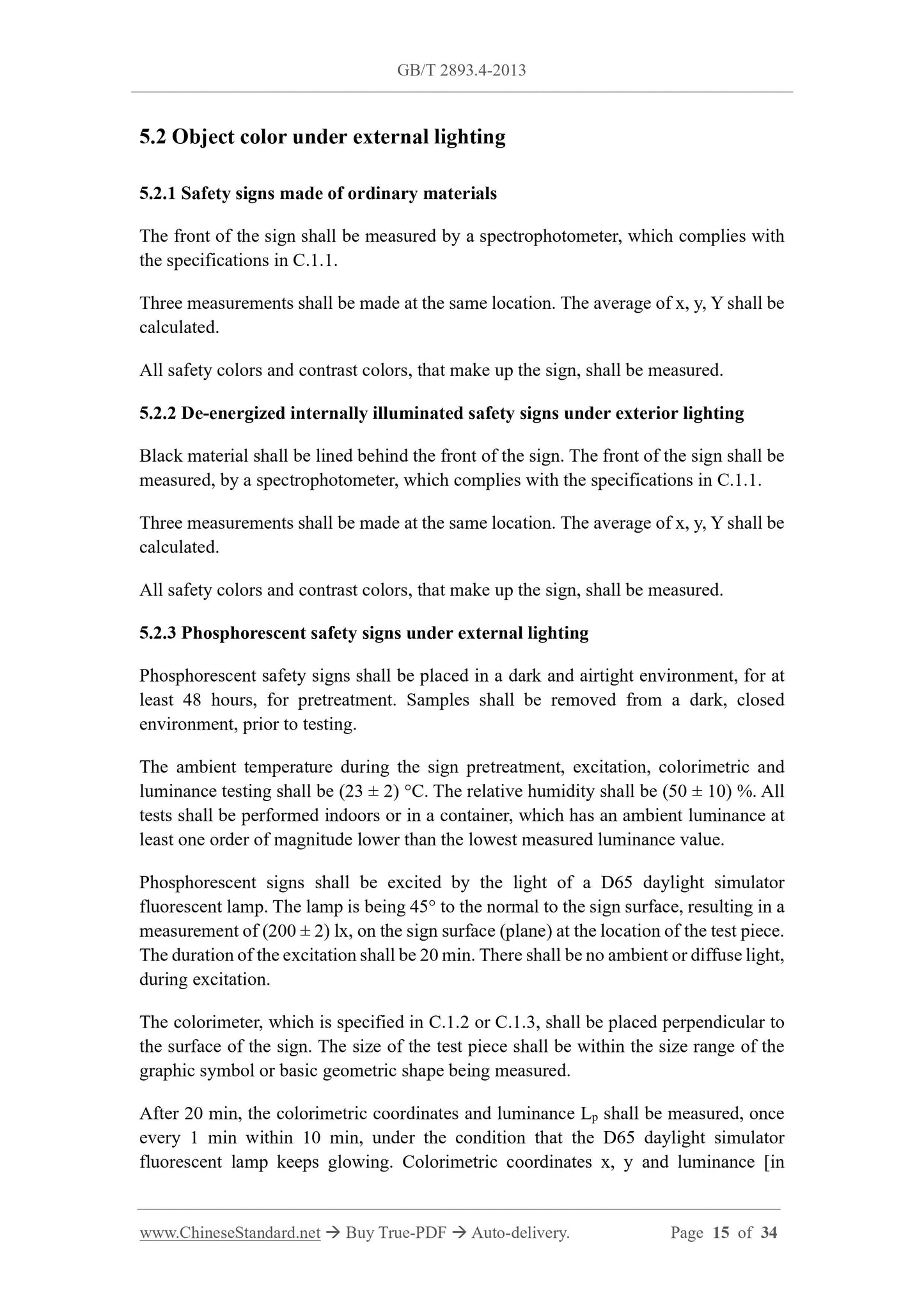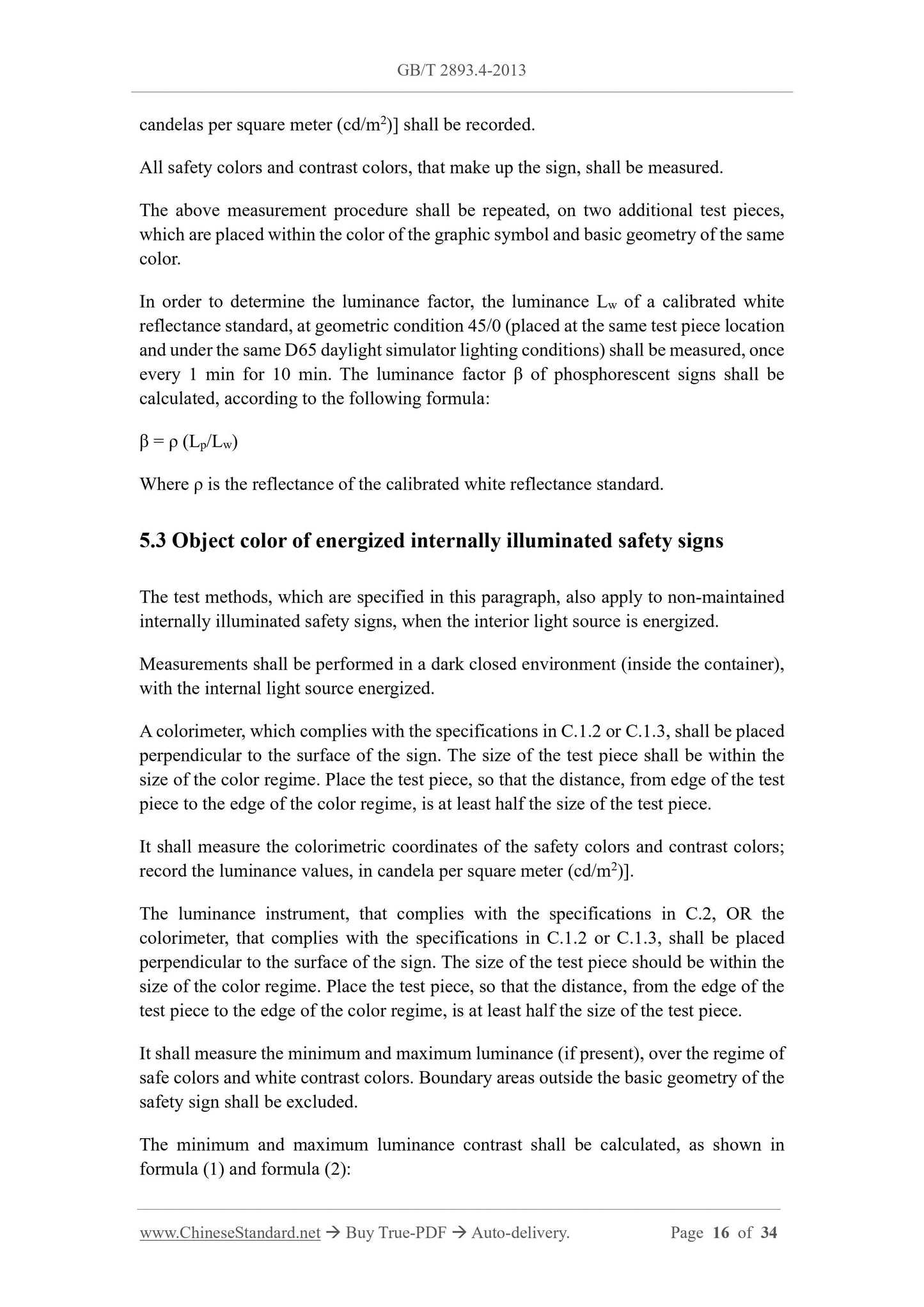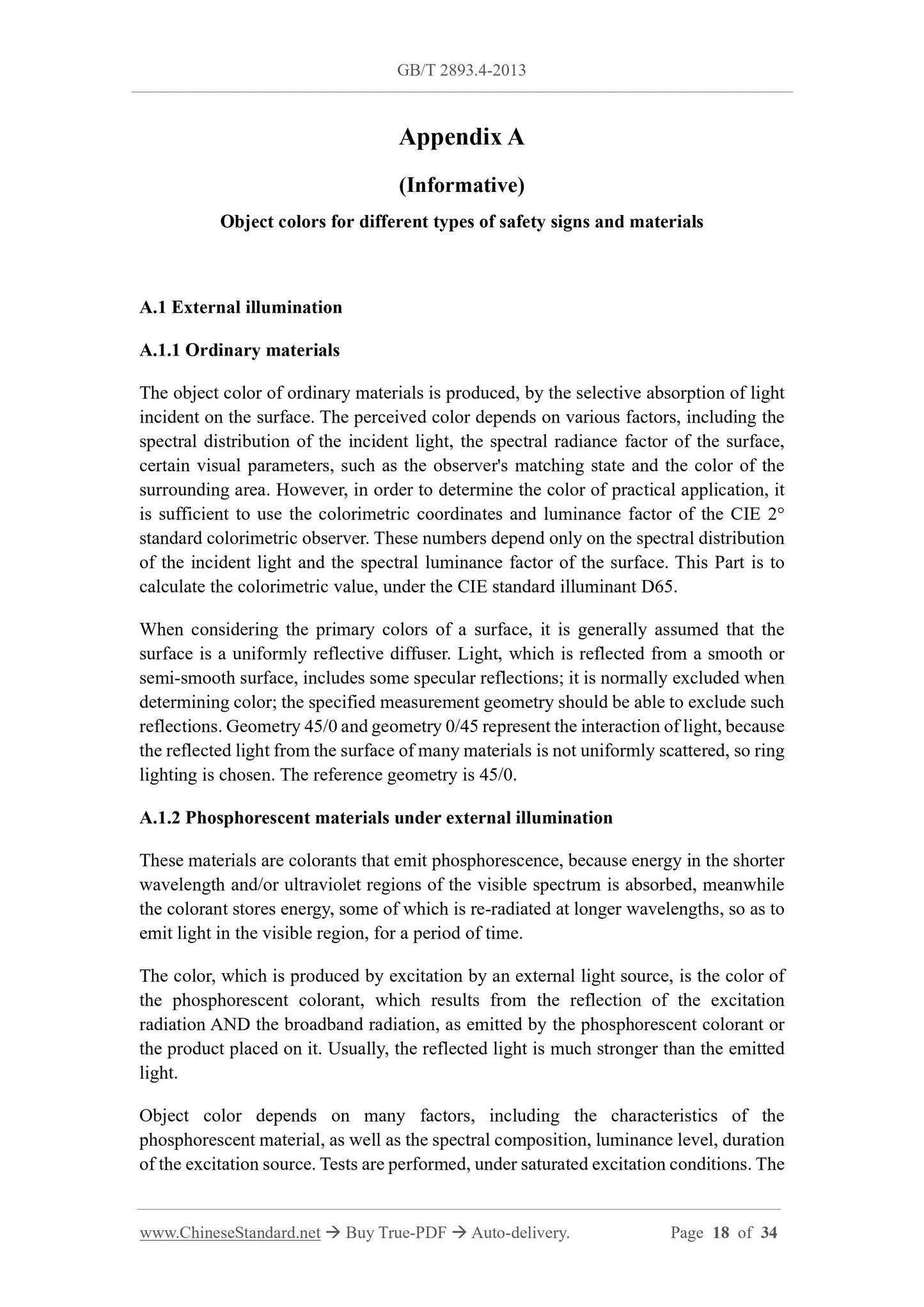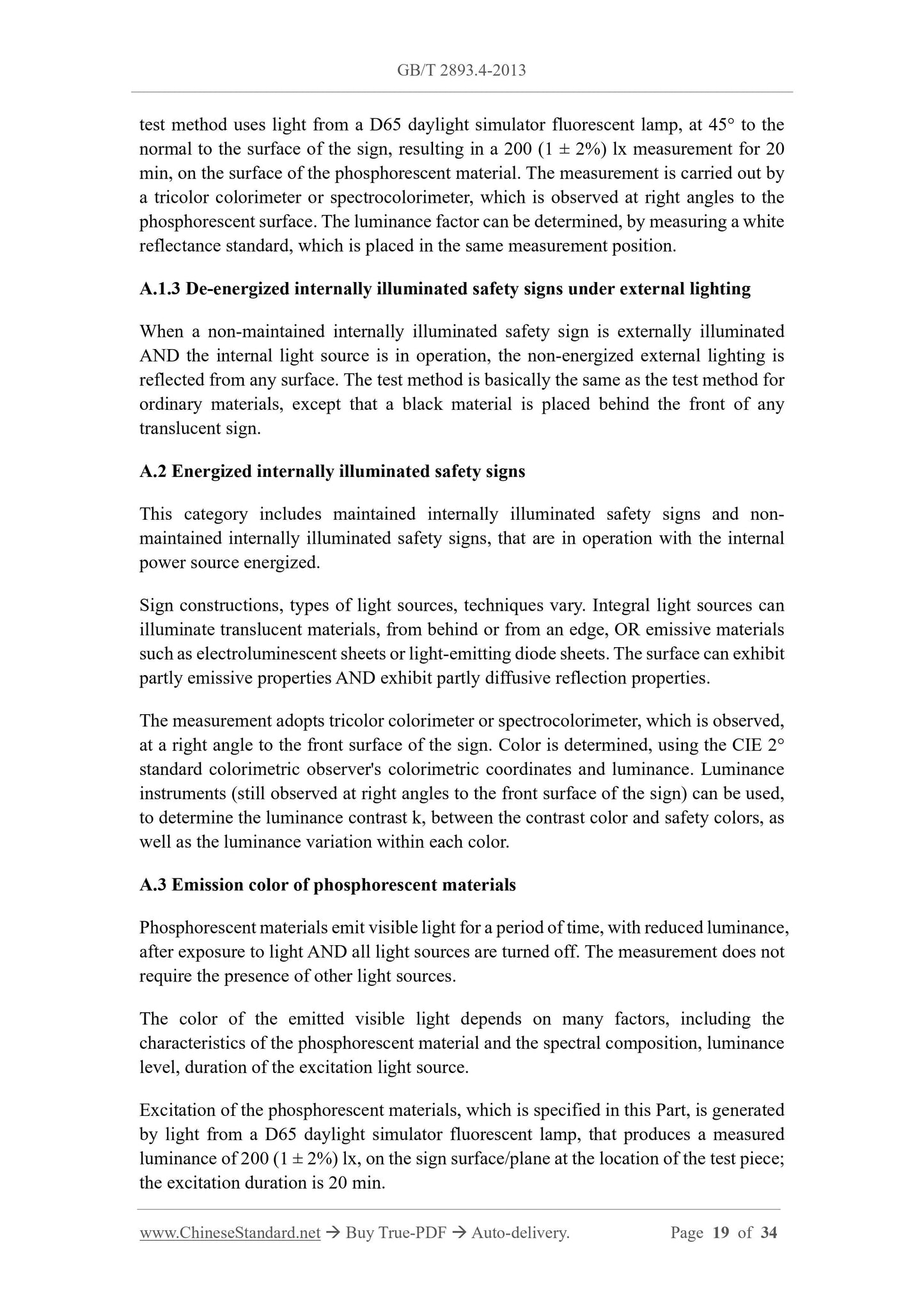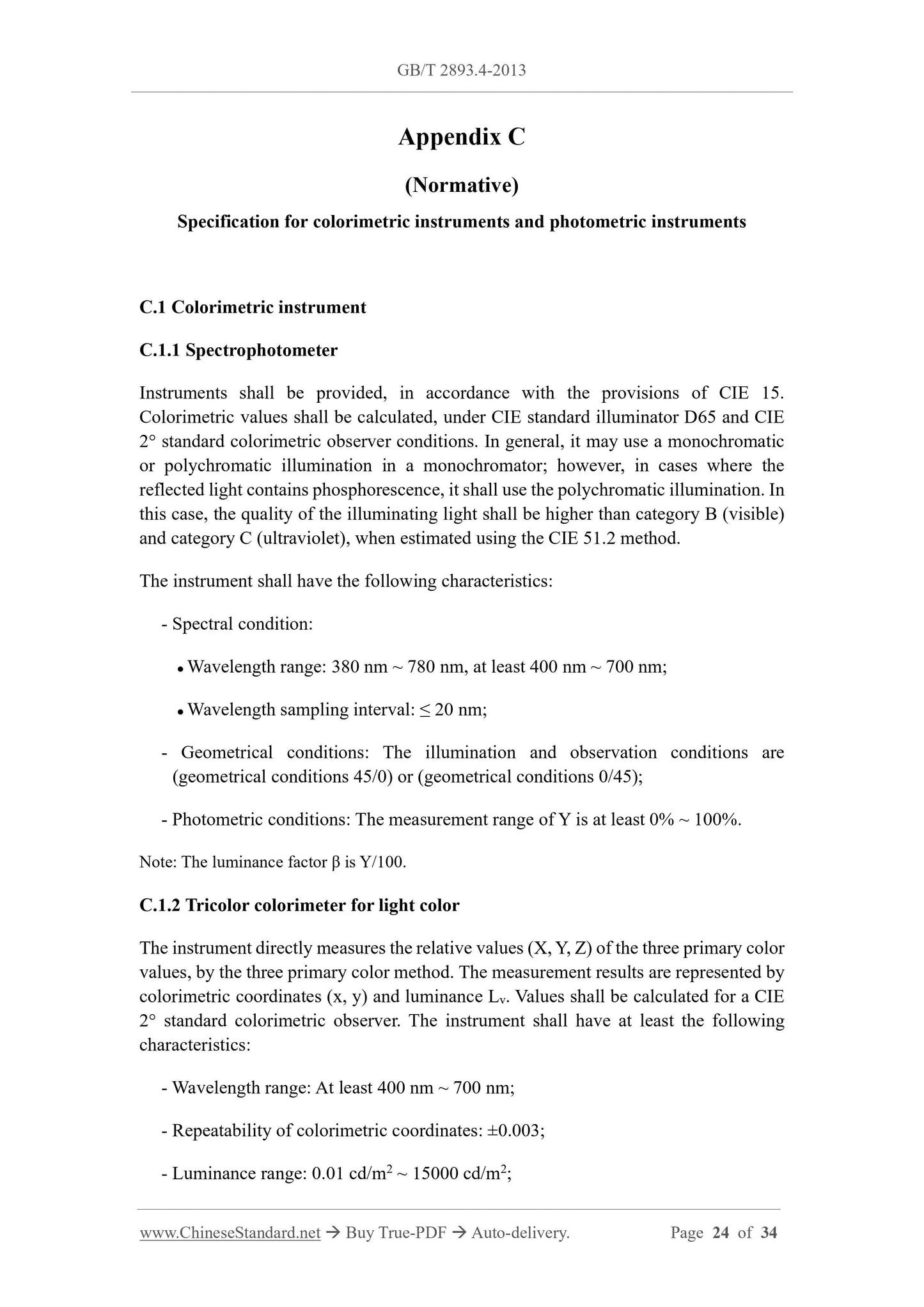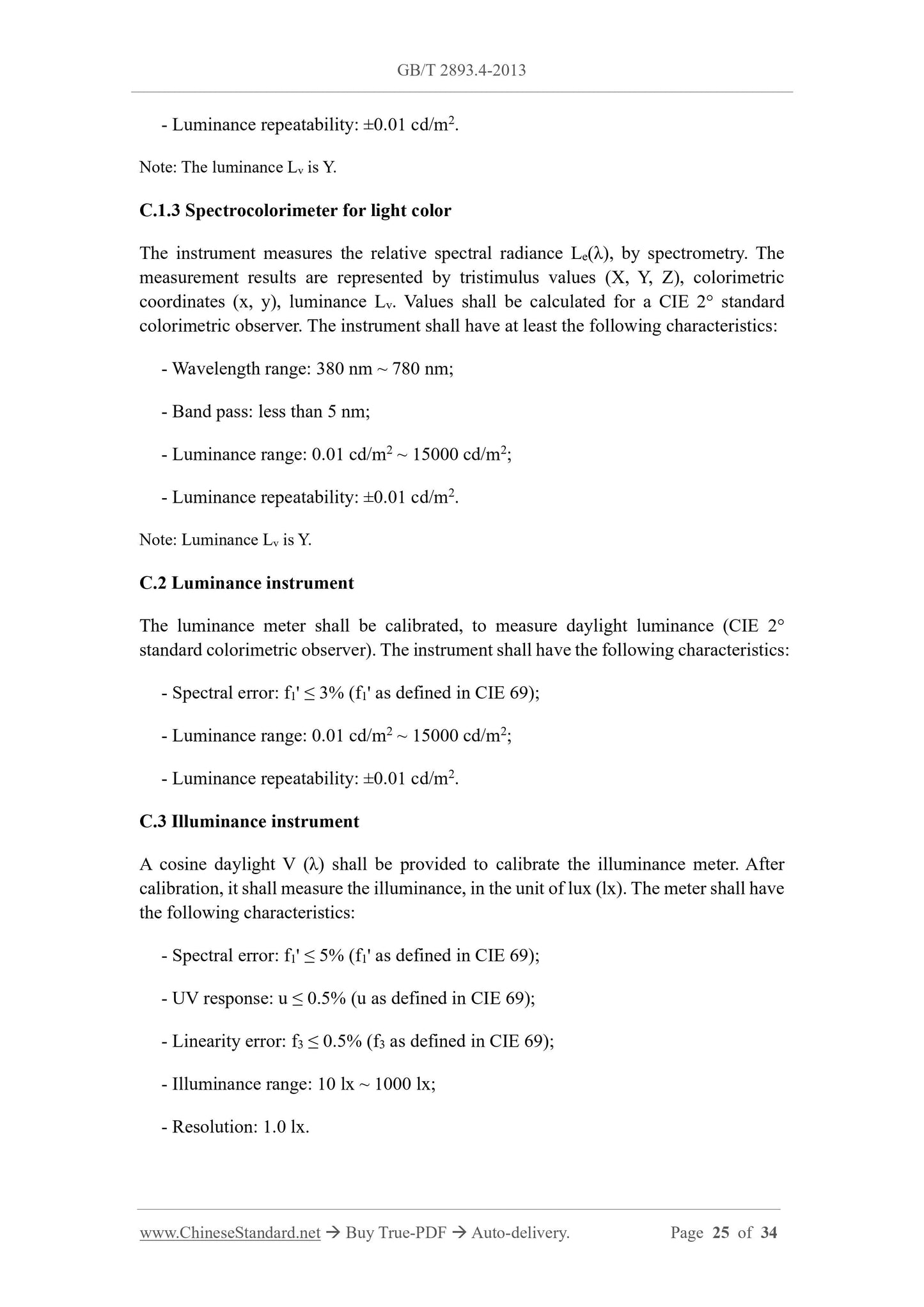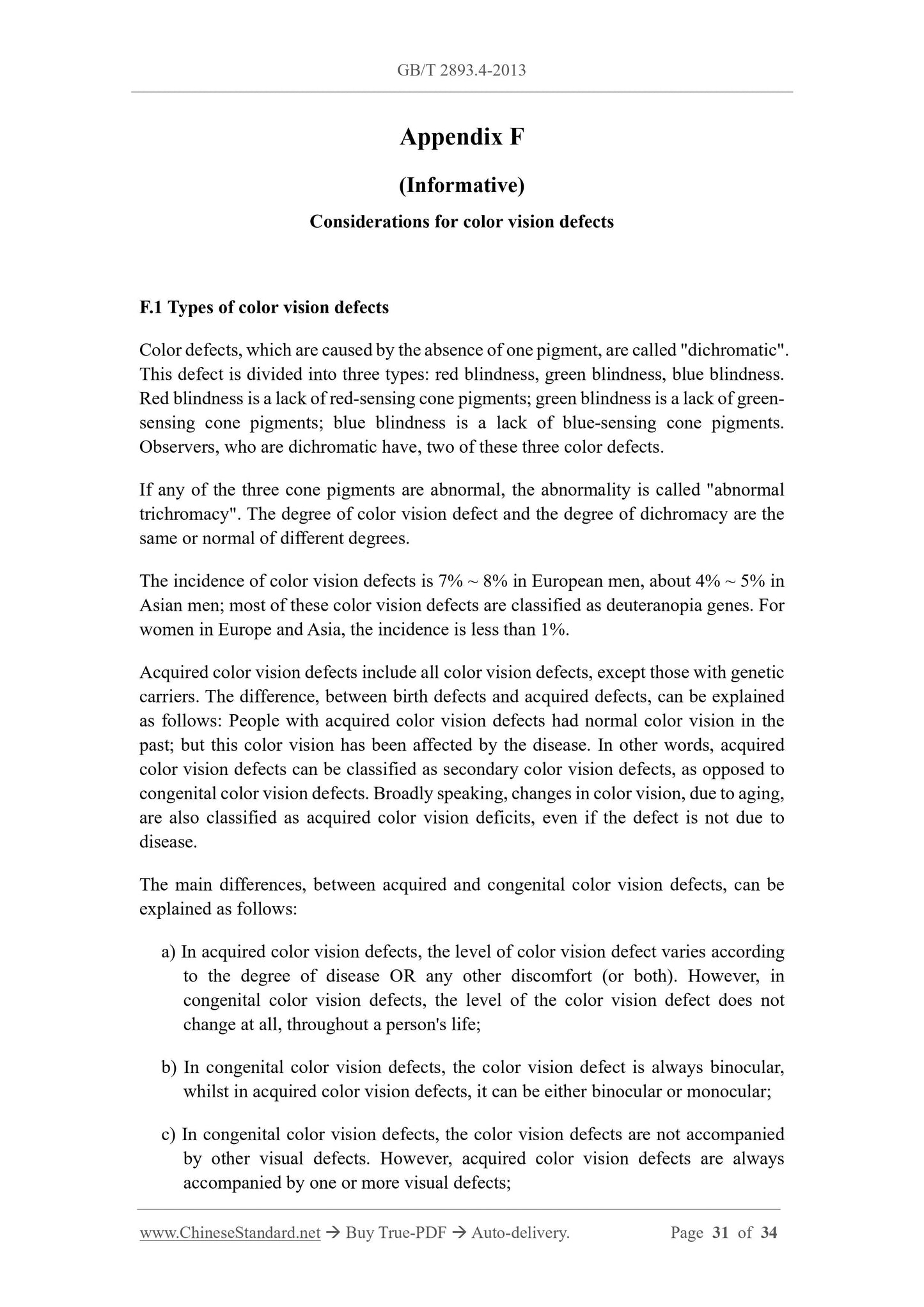1
/
of
12
www.ChineseStandard.us -- Field Test Asia Pte. Ltd.
GB/T 2893.4-2013 English PDF (GB/T2893.4-2013)
GB/T 2893.4-2013 English PDF (GB/T2893.4-2013)
Regular price
$205.00
Regular price
Sale price
$205.00
Unit price
/
per
Shipping calculated at checkout.
Couldn't load pickup availability
GB/T 2893.4-2013: Graphical symbols -- Safety colours and safety signs -- Part 4: Colorimetric and photometric properties of safety sign materials
Delivery: 9 seconds. Download (and Email) true-PDF + Invoice.Get Quotation: Click GB/T 2893.4-2013 (Self-service in 1-minute)
Newer / historical versions: GB/T 2893.4-2013
Preview True-PDF
Scope
This Part of GB/T 2893 specifies the relevant requirements and test methods for thecolorimetric and photometric attributes of the colors of safety signs, which are used in
workplaces and public places. It provides colorimetric and photometric specifications,
for the safety colors and contrast colors, which are specified in GB/T 2893.1-2013..
The physical requirements, as met by safety signs, are mainly related to daylight color
and normal lighting environment. This Part also includes colorimetric requirements and
test methods, for safety signs and phosphorescent materials, which are used in
unilluminated environments.
This Part applies to all locations, where personal safety concerns are an issue. This Part
does not apply to the transmission of guidance signals, for rail, road, inland shipping,
sea, air traffic. In short, it does not apply to the fields otherwise specified in the laws
and regulations.
The colorimetric and photometric properties of retroreflective safety signs,
retroreflective materials combined with fluorescent or phosphorescent materials, or
luminescent safety signs activated by a radioactive source, are not specified in this Part.
Basic Data
| Standard ID | GB/T 2893.4-2013 (GB/T2893.4-2013) |
| Description (Translated English) | Graphical symbols -- Safety colours and safety signs -- Part 4: Colorimetric and photometric properties of safety sign materials |
| Sector / Industry | National Standard (Recommended) |
| Classification of Chinese Standard | A22 |
| Classification of International Standard | 01.080.10 |
| Word Count Estimation | 26,261 |
| Quoted Standard | GB/T 2893.1-2013; CIE 15; CIE 69; GB/T 15565.1; GB/T 15565.2 |
| Adopted Standard | ISO 3864-4-2011, MOD |
| Regulation (derived from) | National Standards Bulletin 2013 No. 10 |
| Issuing agency(ies) | General Administration of Quality Supervision, Inspection and Quarantine of the People's Republic of China, Standardization Administration of the People's Republic of China |
| Summary | This standard specifies: workplaces and public places color Chroma property safety signs, photometric properties related requirements and test methods for, to GB/T 2893. 1-2013 provisions Safety colors and contrasting colors to provide color and photometr |
Share
